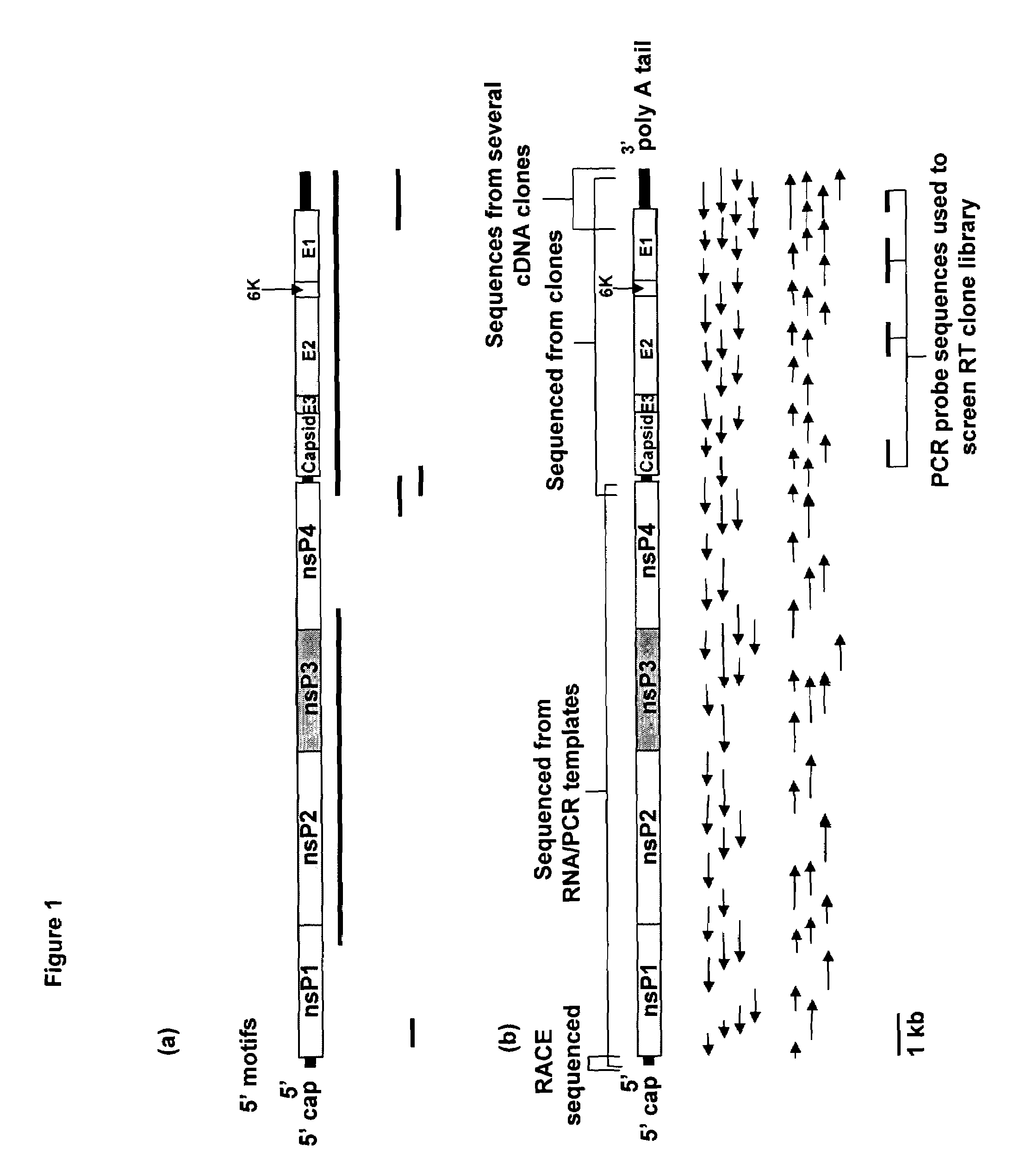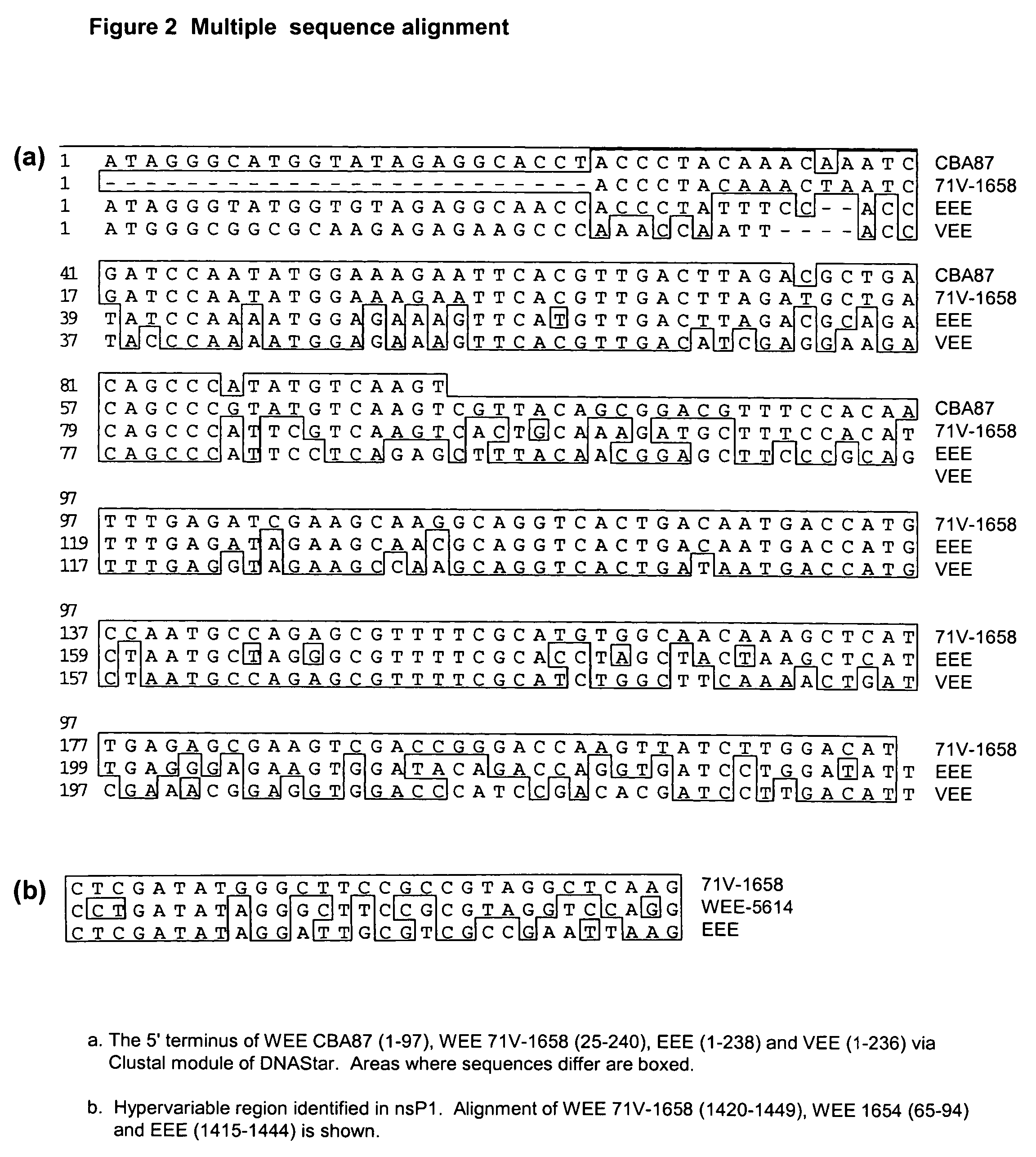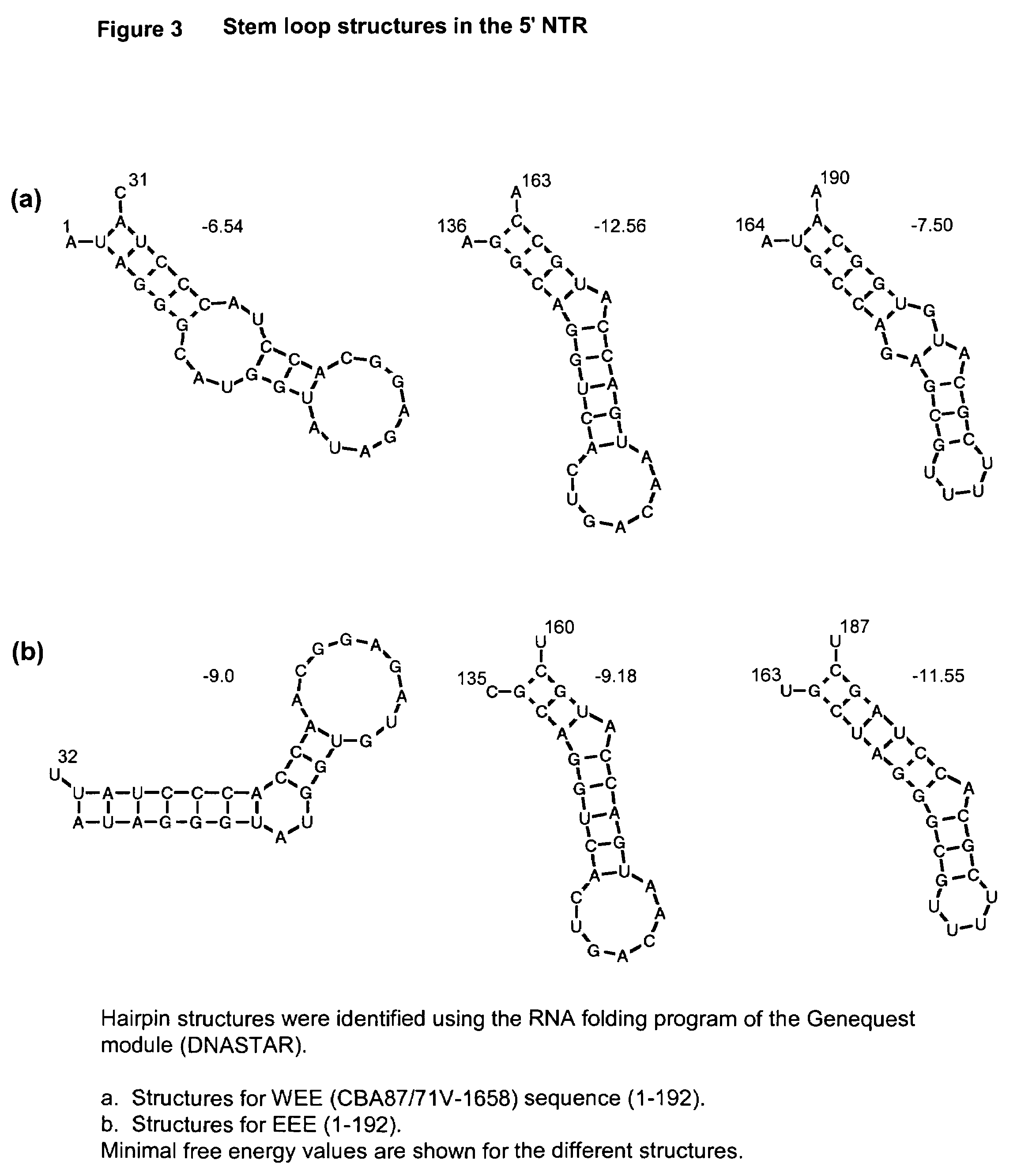DNA-based vaccine against the encephalitis alphaviruses
a technology of encephalitis alphavirus and dna-based vaccine, which is applied in the direction of dna/rna vaccination, antibody medical ingredients, biocide, etc., can solve the problems of limited possibilities and treatment or prophylaxis
- Summary
- Abstract
- Description
- Claims
- Application Information
AI Technical Summary
Benefits of technology
Problems solved by technology
Method used
Image
Examples
Embodiment Construction
[0058]The complete nucleotide sequence of the 71V-1658 strain of western equine encephalitis (WEE) virus was determined (minus twenty-five nucleotides from the 5′ end) and shown in SEQ ID NO: 1. A 5′ RACE reaction was used to sequence the 5′ terminus from WEE strain CBA87. The deduced WEE genome was 11,508 nucleotides in length, excluding the 5′ cap nucleotide and 3′ poly(A) tail. The nucleotide composition was 28% A, 25% C, 25% G and 22% U residues. Comparison with partial WEE sequences of strain 5614 (nsP2-nsP3 of the nonstructural region) and strain BFS 1703 (26S structural region) revealed comparatively little variation; a total of 149 nucleotide differences in 8624 bases (1.7% divergence), of which only 28% of these changes (42 nucleotides) altered the encoded amino acids. Comparison of deduced nsP1 and nsP4 amino acid sequences from WEE with the corresponding proteins from eastern equine encephalitis (EEE) yielded identities of 84.9% and 83.8%, respectively. Previously unchara...
PUM
| Property | Measurement | Unit |
|---|---|---|
| v/v | aaaaa | aaaaa |
| v/v | aaaaa | aaaaa |
| v/v | aaaaa | aaaaa |
Abstract
Description
Claims
Application Information
 Login to View More
Login to View More - R&D
- Intellectual Property
- Life Sciences
- Materials
- Tech Scout
- Unparalleled Data Quality
- Higher Quality Content
- 60% Fewer Hallucinations
Browse by: Latest US Patents, China's latest patents, Technical Efficacy Thesaurus, Application Domain, Technology Topic, Popular Technical Reports.
© 2025 PatSnap. All rights reserved.Legal|Privacy policy|Modern Slavery Act Transparency Statement|Sitemap|About US| Contact US: help@patsnap.com



